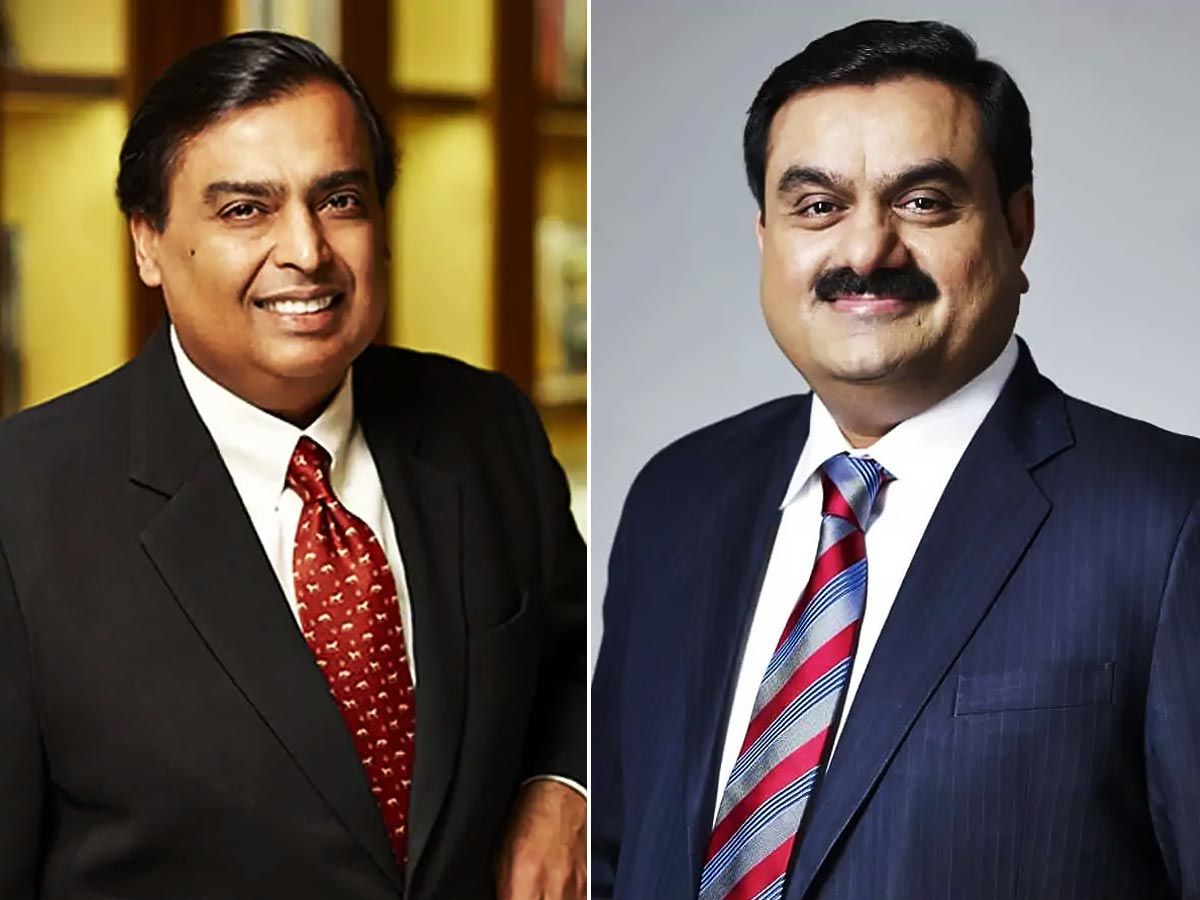Forbes, on October 12, released its list of India’s 100 richest people for 2023. The list saw rank reclaims, returnees, new entrants, and drop-offs along with three interesting debuts.
Ranked at 22, the Dani family from Mumbai made an impressive entry to the Indian billionaires’ list for 2023 with a fortune of $8 billion. The Dani family comprises the heirs of the former non-executive director of Asian Paints, Ashwin Dani, who passed away on September 28. As per a report by the Forbes magazine, Ashwin Dani’s net worth was $8 billion at the time of his passing. In the financial year ended March, Asian Paints reported revenue of $4.1 billion, indicating an increase of 19 percent from the previous year, states the report.
Renuka Jagtiani of Landmark Group, the chairwoman of Dubai-based retail giant Landmark Group, joined the fascinating list of India’s billionaires this year, ranked at 44 with a fortune of $4.8 billion. Jagtiani’s entry to the list comes after the demise of the company’s former chairman, Mukesh Wadhumal “Micky” Jagtiani, also her husband, early this May. As one of the biggest paint companies in Asia, Asian Paints gains 98 percent of its annual revenue from the domestic market.

For almost twenty years, Renuka Jagtiani has been in charge of the company’s corporate strategy and expansion into new markets. As the founder of the company, she is in charge of nearly 50,000 workers.
She was also listed as the 96th most powerful woman in the world by Forbes in 2021, however she fell off the list later in 2022.
When Jagtiani joined the Landmark Group in 1993, her fast-fashion company Splash made headlines. Currently, Splash has a significant market share, being present in over 200 locations in 11 Middle Eastern and African countries.
The chairperson of Landmark then contributed to the establishment of the business’s India division in 1999. The Landmark Indian division occupies 900 locations in five verticals, including Max, Home Centre, and the department store chain Lifestyle. In 2017, Jagtiani became the CEO and chairwoman; however, she left that position in 2022.
In addition to inheriting a $4.8 billion wealth from her husband, the Forbes 100 richest Indian debutante has also carefully selected the Jagtiani family’s next generation to guarantee a seamless legacy transfer. Aarti, Nisha, and Rahul, her three children, are today group directors in charge of several firm verticals.
KP Ramasamy and the KPR Mill family
The family of textile and sugar manufacturer KPR Mill, founded by KP Ramasamy, is ranked 100th in India’s 100 richest list for 2023. The three Ramaswamy brothers collectively own a wealth of $2.3 billion, which is how the KP Ramaswamy family made its debut on the billionaires list.
KPR Mills, located in Coimbatore, produces ethanol, cotton, and polyester yarn in addition to knitted clothing. Additionally, it began producing men’s pants in 2019 under the Faso brand. In 2013, KPR diversified into the sugar industry.
According to the study, the 1984-founded company produces 128 million clothes annually, which are subsequently sold to major international retailers including Walmart, Marks & Spencer, and H&M.
Forbes said that KPR Mills’ newest facility, located in Erode, Tamil Nadu, can make 42 million clothes a year. It’s also noteworthy to mention that ninety percent of the company’s 30,000 employees are female.
Also read: Milk Coffee: Side Effects When Consumed On Empty Stomach
With a $92 billion net worth, Reliance Industries chairman and managing director Mukesh Ambani regained his #1 spot on Forbes’ list of India’s 100 Richest in 2023. At 37 years old, Nikhil Kamath, a co-founder of Zerodha, holds the title of youngest billionaire. The total net worth of brothers Nithin and Nikhil Kamath, who are ranked 40th among the richest people in India, is currently $5.5 billion.
Forbes said on October 12 that the combined wealth of India’s 100 Richest was steady at $799 billion for 2023. The research claims that even though the Indian stock market has surged by 14% since it was last updated, the country’s wealthiest citizens’ combined net worth has been suppressed by the ongoing depreciation of the Rupee.
Shareholding and financial data from families, individuals, stock exchanges, analysts, and Indian regulatory bodies were used to produce this list. As of September 22, public fortunes were determined using stock prices and exchange rates. Comparable publicly traded corporations served as the basis for the valuation of private companies.

























